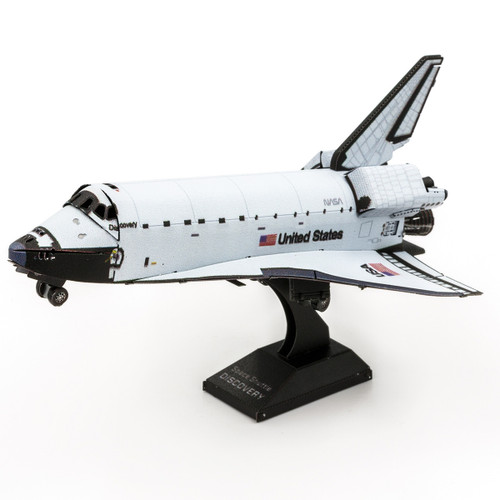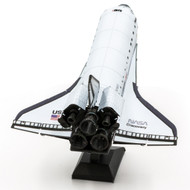Space Shuttle Discovery (Orbiter Vehicle Designation: OV-103) is one of the orbiters from NASA's Space Shuttle program and the third of five fully operational orbiters to be built. Its first mission, STS-41-D, flew from August 30 to September 5, 1984. Over 27 years of service it launched and landed 39 times, aggregating more spaceflights than any other spacecraft to date. The Space Shuttle launch vehicle has three main components: the Space Shuttle orbiter, a single-use central fuel tank, and two reusable solid rocket boosters. Nearly 25,000 heat-resistant tiles cover the orbiter to protect it from high temperatures on re-entry.
Discovery became the third operational orbiter to enter service, preceded by Columbia and Challenger. It embarked on its final mission, STS-133, on February 24, 2011, and touched down for the last time at Kennedy Space Center on March 9, having spent a cumulative total of nearly a full year in space. Discovery performed both research and International Space Station (ISS) assembly missions, and also carried the Hubble Space Telescope into orbit.
Discovery was the first operational shuttle to be retired, followed by Endeavour and then Atlantis. The shuttle is now on display at the Steven F. Udvar-Hazy Center of the Smithsonian National Air and Space Museum. Wikipedia.
Launch date: August 30, 1984, 8:41 AM EDT
Max speed: 17,400 mph
Rocket: Space Shuttle
Cost: 196 billion USD (2011)
Location: Steven F. Udvar-Hazy Center; Chantilly, Virginia
Travelled: 238,539,663 kilometres (148,221,675 mi) around Earth
Flights: 39
Number Of Sheets: 2 Sheets
Difficulty: Challenging
Assembled Size: 4.5"L x 2.8"W x 2.3"H (11.43 x 7.11 x 5.84 cm)
Ages 14+
Metal Earth kits are made from high quality steel sheets. Each model features amazing detail with parts cut from one or more 4” square steel sheets. Easy to follow instructions are included with each kit and NO GLUE OR SOLDER REQUIRED! Simply snip out the pieces and bend the tabs through corresponding connection points.











